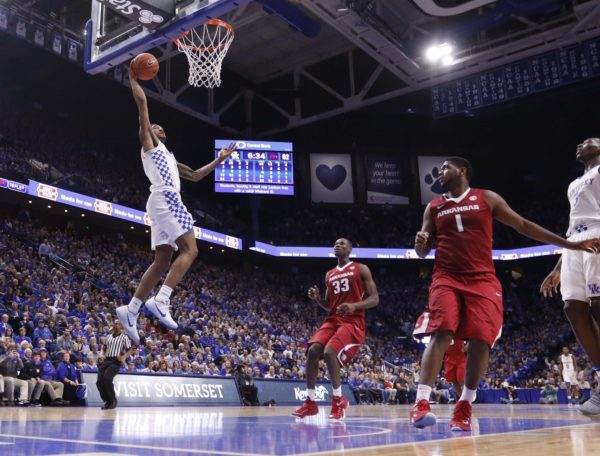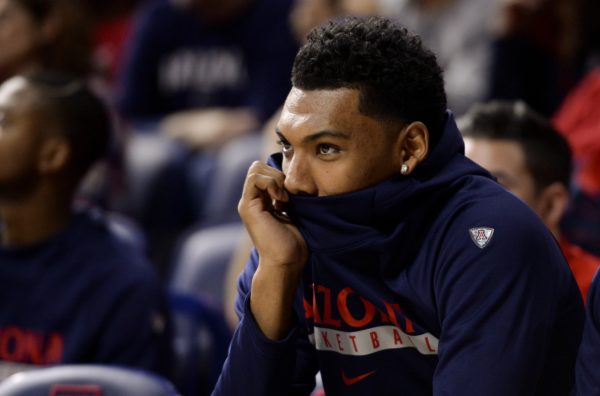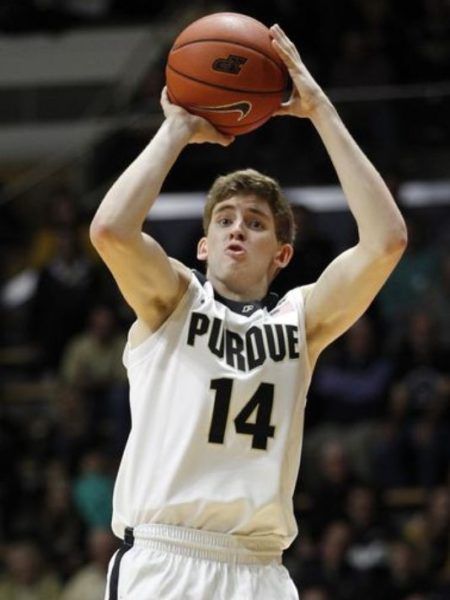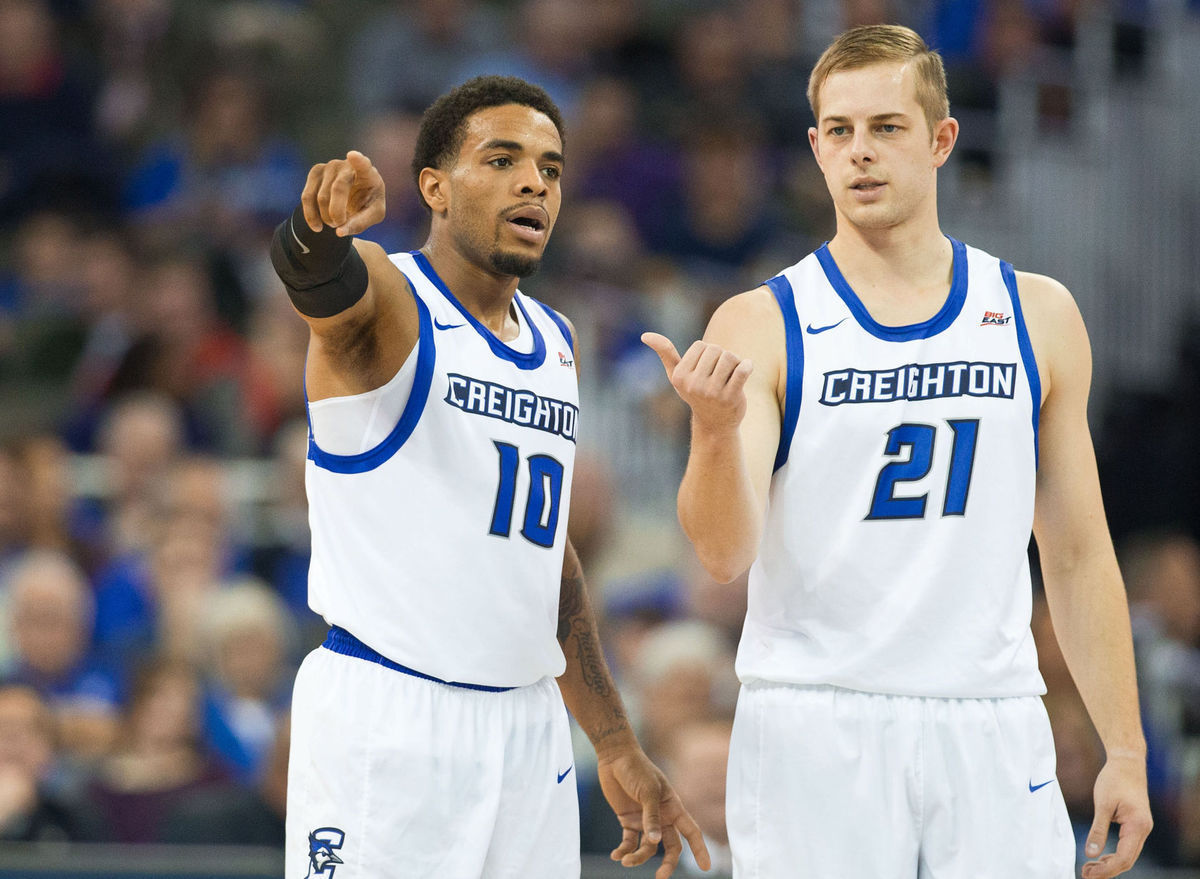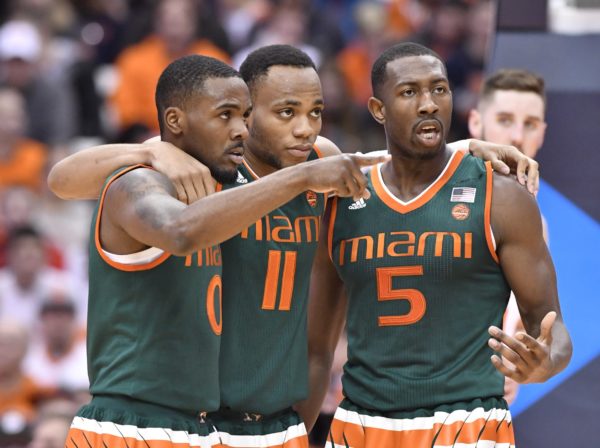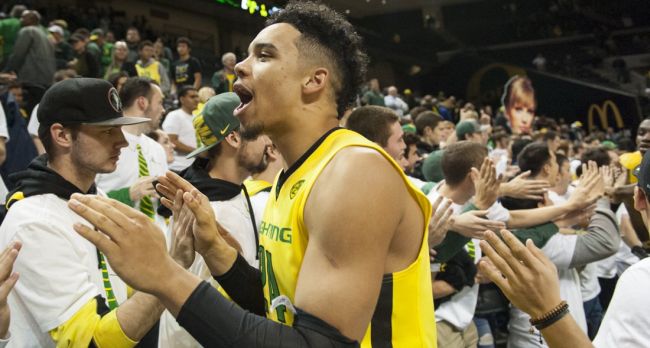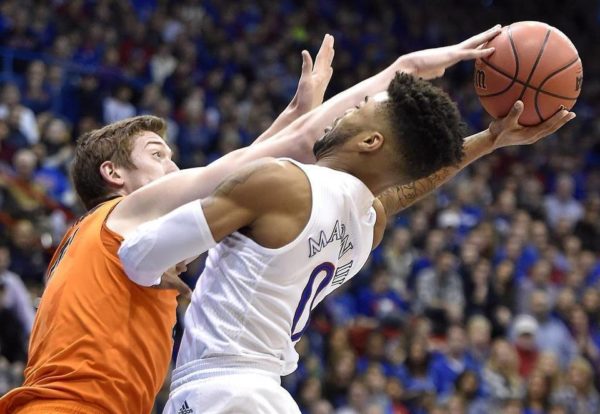Big 12 Power Rankings: It’s Happening Again Edition
Posted by Big 12 Team on January 20th, 2017Kansas had a big night on Wednesday and the Jayhawks didn’t even play. Despite being favored by 17 points, West Virginia lost in stunning fashion to Oklahoma, done in by a few clutch plays from Jordan Woodard. The loss dropped the Mountaineers two games behind the Jayhawks in the Big 12 standings, and with Kansas set to play Texas at home on Saturday while West Virginia travels to Kansas State, the deficit could grow even deeper before the pair square off in Morgantown on Tuesday. Whether they beat the Wildcats or not, West Virginia could theoretically climb back into the race by notching wins against its peers in the upper third of the conference, but Wednesday’s loss underscores the importance of winning at home when it comes to contending for the Big 12 title. For now, the focus shifts back to Baylor, which is set to take on a tough TCU team in Fort Worth this weekend. The Bears will be favored, but not by more than a few points, which means the wheels could be in motion for Kansas to create some serious distance in its pursuit of consecutive regular season title #13. With comments on each team are Big 12 microsite writers Drew Andrews, Justin Fedich, Brian Goodman, Nate Kotisso, and Chris Stone.
1. Kansas: “The Jayhawks are unblemished in league play because they’re one of the best teams in America. They’re led by a National Player of the Year candidate, they have a likely one-and-done lottery pick who is asked to do a lot, but not too much, and they’re coached by one of the best in the profession. It’s tough to beat that combination. But another reason why Kansas is currently 6-0 in league play is because they’ve had the league’s second-easiest conference schedule to this point. That’s about to change very soon, however. After Saturday’s game against Texas, the Jayhawks travel to Morgantown, take a break from Big 12 play by playing Kentucky at Rupp Arena, then resume conference action with home games against Baylor and Iowa State. This team will ultimately be defined by what it does in March, but if they beat the odds to make it through the rest of January unscathed, it may be time to start thinking about this season as one of Bill Self‘s best ever.” -Brian Goodman





























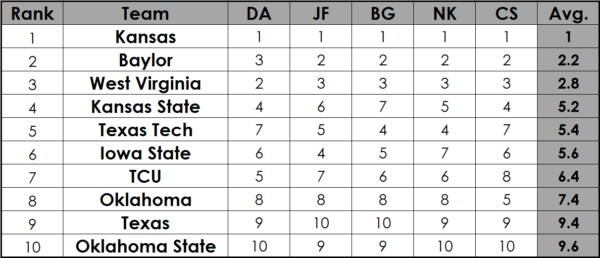
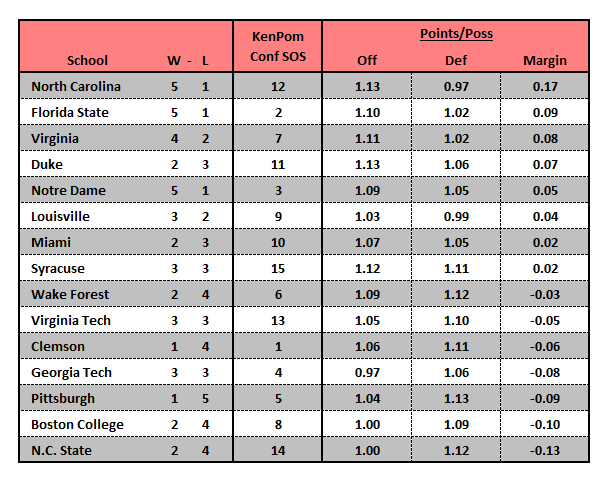 With a sample size of games this small, any one-game extreme performance can really impact the season numbers. This means that some of what we see in the table above is the result of two ACC blowouts — North Carolina’s 51-point rout of N.C. State, and Duke‘s 53-point beating of Georgia Tech. The Tar Heels are currently leading the league in both offensive and defensive efficiency, mostly because of their incredible dominance on the boards. North Carolina’s 44.0 percent offensive rebounding rate in ACC play is even higher than its nation-leading mark for all games (42.7%). Florida State and Notre Dame have achieved great starts (both are 5-1) despite facing two of the three toughest league slates to this point. At the other end of the ledger is Clemson, which has only managed a single win over Wake Forest while playing the toughest conference schedule. The Tigers’ actual performance margin, however, is better than the three squads ahead of them in the standings, so maybe they are not struggling as much as it appears.
With a sample size of games this small, any one-game extreme performance can really impact the season numbers. This means that some of what we see in the table above is the result of two ACC blowouts — North Carolina’s 51-point rout of N.C. State, and Duke‘s 53-point beating of Georgia Tech. The Tar Heels are currently leading the league in both offensive and defensive efficiency, mostly because of their incredible dominance on the boards. North Carolina’s 44.0 percent offensive rebounding rate in ACC play is even higher than its nation-leading mark for all games (42.7%). Florida State and Notre Dame have achieved great starts (both are 5-1) despite facing two of the three toughest league slates to this point. At the other end of the ledger is Clemson, which has only managed a single win over Wake Forest while playing the toughest conference schedule. The Tigers’ actual performance margin, however, is better than the three squads ahead of them in the standings, so maybe they are not struggling as much as it appears.
